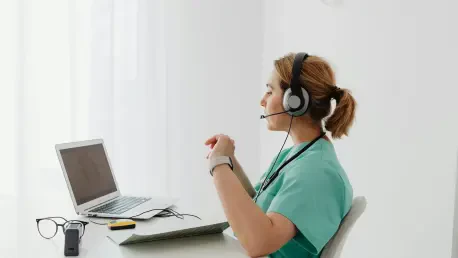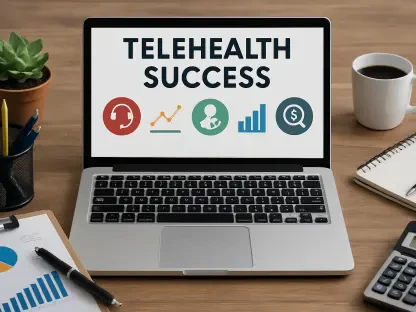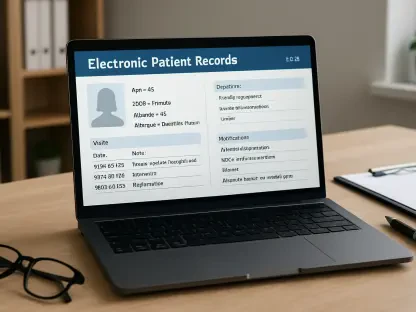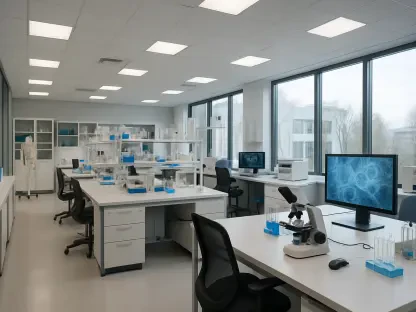In remote corners of New Mexico, residents face a challenging reality: accessing timely healthcare services involves navigating expansive distances and logistical hurdles that can be daunting for many. This predicament is compounded by a lack of digital infrastructure, making online consultations nearly impossible for many individuals living in these underserved regions. Against this backdrop, a pioneering initiative is unfolding, aimed at bridging these gaps through the introduction of telehealth booths within public libraries across the state. Spearheaded by Deirdre Caparoso, an outreach and community engagement librarian at The University of New Mexico Health Sciences Library, and in collaboration with the New Mexico State Library, this plan envisions a new era of healthcare delivery that taps into the power of virtual consultations. The telehealth booths promise to offer both privacy and connectivity, potentially revolutionizing the healthcare landscape for residents who previously faced insurmountable barriers to medical care.
Transforming Healthcare Access in Rural Regions
The essence of telehealth booths lies in their ability to address fundamental issues of healthcare access within remote areas. These structures are meticulously designed with all necessary technological components—computers, microphones, cameras, and high-speed internet connectivity—to facilitate virtual consultations with healthcare providers located miles away. Patrons can utilize these resources or bring their own devices, thus ensuring a flexible experience that caters to various needs. However, an important caveat remains that these libraries do not host healthcare professionals; users are responsible for selecting their telehealth services and arranging appointments independently. This initiative is not just an imaginative concept; it is already taking tangible shape, with installations in libraries such as the Octavia Fellin Public Library in Gallup, Aztec Public Library, Mescalero Community Library on the Mescalero Apache Reservation, and plans for another at Fort Sumner Public Library.
A critical advantage of these booths is the logistical ease they introduce. Before their implementation, residents in isolated communities often embarked on lengthy journeys for basic medical consultations. Such trips are not only time-consuming but often costly, presenting additional challenges for those living in rural New Mexico. By providing a local venue equipped to support telehealth services, these booths allow individuals to bypass the need for extensive travel, ensuring quicker access to healthcare advice. The strategic location within public libraries, renowned for their role as connectivity hubs, further enhances the booths’ impact, targeting areas where digital inequities have long impeded residents’ ability to engage with online resources, including telemedicine platforms.
Addressing Digital Disparities through Library Collaborations
Digital inequities persist across vast swathes of New Mexico, posing significant barriers to healthcare access. Many residents lack the broadband infrastructure necessary for reliable internet connectivity, thereby restricting their ability to utilize online health services. Public libraries serve as beacons of digital connectivity despite these challenges, making them ideal candidates for hosting telehealth booths designed to rectify this situation. The booths, therefore, emerge not only as healthcare enhancers but also as pivotal instruments in remedying digital disparities prevalent within the state. This dual function—serving healthcare needs while simultaneously addressing digital inequities—encapsulates a progressive approach that could have substantial repercussions beyond the realm of medical care, potentially enabling broader internet usage and engagement with digital services.
Moreover, the booths accommodate multigenerational family structures often found in rural communities, offering enough space to comfortably house two to three individuals. This is particularly beneficial in scenarios where familial support or assistance is needed. Such features enable inclusive participation and ensure individuals requiring accompaniment can engage in consultations seamlessly. Additionally, the private and soundproof design of the booths makes them suitable for sensitive consultations, such as therapy sessions for mental health and substance abuse, which require confidentiality. In homes characterized by overcrowded living conditions, these booths provide an invaluable respite, empowering individuals to seek aid without sacrificing privacy.
Education and Expanding Roles of Telehealth Booths
An integral aspect of this initiative is its educational dimension, which plays a vital role in optimizing the use of telehealth booths. Deirdre Caparoso has developed a comprehensive telehealth-booth training program for library staff, supported by funding from the Network of the National Library of Medicine. This training equips library personnel with the necessary skills to assist patrons, enhancing the booths’ utility and ensuring seamless operation. Library staff also gain awareness of consumer-health-information materials available in conjunction with telehealth services, broadening their capacity to provide informed support and guidance to users. The educational component of this endeavor represents a crucial factor in maximizing the booths’ potential, preparing libraries to fulfill expanded roles that transcend their traditional functions.
Beyond the primary function of healthcare delivery, telehealth booths have proven their versatility in fulfilling other community needs. Libraries have integrated these spaces into broader programs due to their discreet and soundproof nature. At the Mescalero Community Library, for instance, telehealth booths augment the tribal community health program and significantly aid the tribal-language program, providing facilities for language recordings and more. Such multifaceted usage underscores the versatility and adaptability of these booths, highlighting their potential in enhancing community initiatives. The foresight in designing booths capable of supporting diverse functions is indicative of a well-rounded approach that empowers libraries to explore varied applications, extending their utility beyond healthcare provision.
The Future of Telehealth Booths in Rural Healthcare
In remote parts of New Mexico, residents are confronted with the challenge of reaching timely healthcare services due to vast distances and logistical obstacles. These hurdles are intensified by a lack of digital infrastructure, rendering online consultations almost impossible for many people in these underserved areas. Amidst this scenario, a groundbreaking initiative is taking shape to bridge these gaps through telehealth booths installed in public libraries statewide. Led by Deirdre Caparoso, an outreach and community engagement librarian at The University of New Mexico Health Sciences Library, and in partnership with the New Mexico State Library, this project envisions a new era of healthcare access through virtual consultations. These telehealth booths are designed to ensure both privacy and connectivity, potentially transforming the healthcare landscape for residents who previously struggled with insurmountable barriers to medical care. This initiative aims to make healthcare more accessible and equitable, offering a lifeline to those in need.









